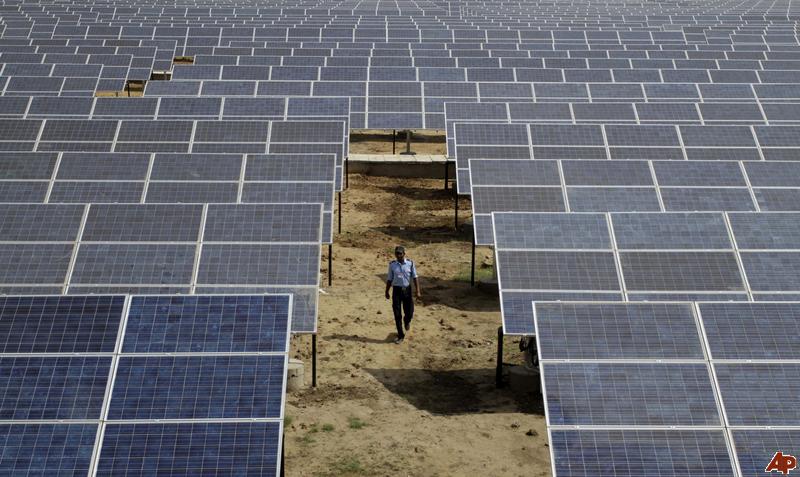Solar energy could account for 25 per cent of India’s total electricity generation by 2022, making up nearly 60 per cent of newly installed capacity, if current government grid and solar growth targets remained on track, a new report has predicted.

The report, published by Deutsche Bank on Friday, says that with current generation capacity in India at ~280GW, solar penetration would reach 25%, assuming installed generating capacity reached 400GW by 2022.
India – long considered one of the highest potential solar markets – last year targeted ~100GW of solar by 2022, as part of the Modi government’s “saffron revolution”.
“Given current installed capacity of ~3GW, the (100GW) target implies an annual run rate of ~12GW for the next 8 years, although actual installs will likely ramp differently,” says the report.
And while Deutsche concedes that this looks “quite ambitious” on paper, it thinks it is achievable, provided complicating issues – including lowering the cost of financing, attracting investment, and making land available – were addressed using “timely and appropriate” policy mechanisms.
Interestingly, the energy minister told EY this week that the country aimed to meet that target even earlier, and wanted to become the world’s no 1 market for renewable energy by 2019. It is currently ranked 5th.

As for the cost of solar, the report notes that at ~12c/kWh, it is already at or below parity with traditional power generated using imported coal in some regions in India, and is expected to achieve parity with power from domestic coal (~$0.10/kWh) by 2020.
In just the past four years, the difference between solar and coal generation has fallen from 7:1 to nearly 1:1, with parity to be achieved against imported coal this year thanks to new financing innovation.
This downward price trajectory, Deutsche says, could be accelerated by the arrival in the investment market of yield-cos, which could “soon make solar energy even cheaper than coal and other forms of electricity generation.” This graph shows how the difference will swing in favour of solar over imported coal, creating yet more problems for coal exporters such as those in the proposed Galilee Basin in Queensland.
Meanwhile, the cost of coal – both imported and domestic – is expected to rise, according to India’s Central Electricity Regulatory Commission (CERC), which has tipped annual increases of 6.7 per cent and 13 per cent respectively.

On top of this, India announced in its budget that it will raise the duty on imported coal to 200 rupees ($3.2) a tonne, Finance Minister Arun Jaitley said.The money will be used to promote clean energy, he said, indicating India’s commitment to fight global warming. “With regard to coal, there’s a need to find a balance between taxing pollution and the price of power,” Jaitley said. “I intend to start on that journey too,” Bloomberg reported.







